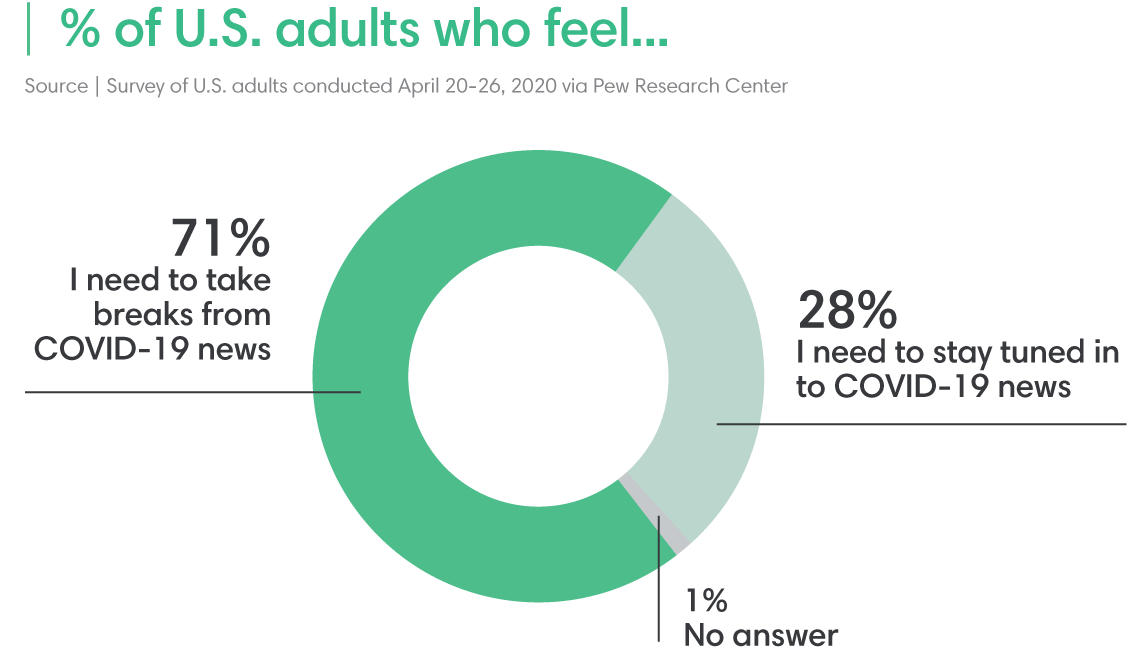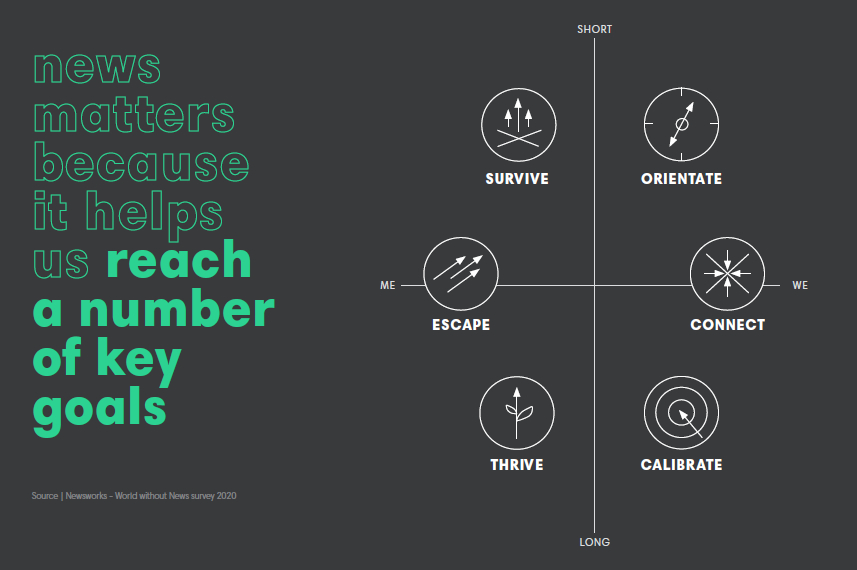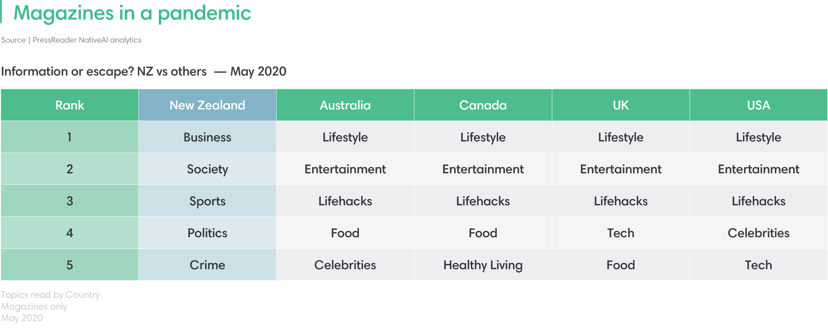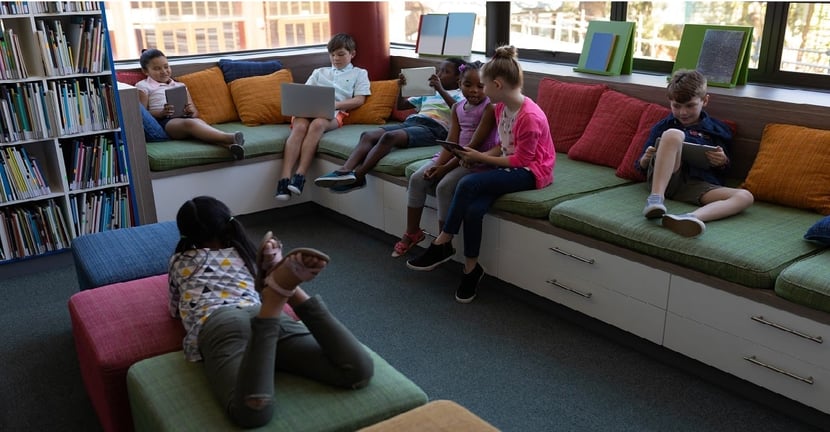Most people don’t talk about the future of libraries unless, of course, they’re a librarian or looking to be one. Public libraries have been around for hundreds of years, and we often took them for granted. Then COVID-19 hit, and suddenly everything changed.
Watching libraries close their doors after being truly the most open and inclusive public spaces in the world made many of us appreciate them more, and we learned the hard way that libraries are essential to civic engagement and the health and welfare of society as a whole.
That's why I was so pleased to learn about sociologist Eric Klinenberg’s 2019 book Palaces for the People: How Social Infrastructure Can Help Fight Inequality, Polarization, and the Decline of Civic Life.
See also:
-
The role public libraries play in community health and wellbeing
-
The evolving role of librarians: how is library leadership changing?
Every city has a social infrastructure
.jpg?width=828&height=530&name=palaces-for-the-people-book-cover%20(1).jpg)
In Palaces for the People, Klinenberg writes about how libraries are an “essential public good” and part of our “social infrastructure”, which he defines as “physical places and organizations that shape the way people interact.”
Klinenberg posits that, just as there are infrastructures for water, power and transit, there is a social infrastructure in every city, town and neighborhood. He also believes that a community’s resilience correlates strongly with the robustness of its social infrastructure.
Epidemiologists — scientists who study diseases within populations — believe that there is a relationship between social connections, health and longevity. When social cohesion breaks down, community members grow isolated and their wellbeing suffers.
Social infrastructure is vital in times of crisis
Having a healthy social infrastructure is critically important when disasters like hurricanes strike. Very often, it’s libraries — and other institutions like schools and churches — that step up first to provide the shelter and community connections so desperately needed by those impacted by the crises.
Even before COVID, we saw this happening in many parts of the world, including the US, where communities became more fragmented, more polarized and conflicted. The pandemic exasperated it further when lockdowns and closures of our critical social institutions (schools, libraries, playgrounds, parks, churches et cetera) spread with the virus.
Guardians of these organizations (teachers, librarians and clergy) faced massive challenges in reconnecting with community members and helping them reconnect with each other. From my vantage point, no one did it better than librarians.
When the going gets tough, call a librarian
You may have figured out that I am a staunch advocate for libraries and the work librarians do for their patrons and communities. During the 2020 pandemic, for example, their contributions to their constituents, society and democracy reached new heights. Many went above and beyond their official job descriptions to keep people educated, entertained, safe and sane in lockdown.
Some librarians manufactured face shield headbands for healthcare workers. Many took on the role of contact tracers to help contain the virus’s spread, while others converted their library buildings into food banks and homeless shelters.
I could go on and on, but instead, I recommend you check out the July 2020 issue of The Insider and meet some of these inspiring individuals.
Back to the future
Let me tell you a story Eric Klinenberg shared during his book tour at the Kinder Institute Forum in December 2019. It hit home to me how important libraries are and how they’re sadly so misunderstood.
In 2013, President Barack Obama’s administration appointed Klinenberg as the research director for a multi-billion-dollar international competition funded by the US Congress called Rebuild by Design. For nine months, he worked with 148 teams of architects, engineers, city planners and landscape designers worldwide, helping them generate proposals on building resilient infrastructures that would sustain New York City, should another disaster like Hurricane Sandy strike.
The 2012 hurricane tore through 24 states and the entire eastern seaboard, killing 48 people and causing an estimated US$74.1B in damages.
Reinventing the public library
One team from the Gulf of Mexico region that had done impressive work after the deadly 2005 Hurricane Katrina approached Klinenberg with what they considered a fantastic idea. They were so excited about it that they designed an entirely new building prototype and called it a “Resilient Center”. They created it for a Connecticut neighborhood but believed it could scale and be put into communities all over the US and possibly the world.
Here’s how they pitched their brilliant idea to Klinenberg.

“Imagine you have a public building that’s designed to be kind of a home away from home for everyone in the neighborhood. It would be open five, six, or seven days a week and staffed by resilience professionals who would aggressively welcome everyone in the neighborhood. Doors would be open as much as possible so that people would know they’re wanted. Although designed for everyone, it would be especially important for the least mobile young people and the very old who are closely tied to the neighborhood in which they live.
“A number of special programs would exist for the youth, including reading classes, Storytime, sing-alongs, language courses, playtime, and art classes. There’d be lots of play spaces as well. For the adults who bring the children and elderly to the center, there would be free WiFi, computers, tablets, comfortable furniture, and social activities like book clubs, film nights, and current event conversations.”
When their pitch was over, Klinenberg, somewhat flabbergasted, said, “Just out of curiosity, have you ever heard of a library?”
True story; I kid you not.
Later, upon reflection, it occurred to Klinenberg that when people face a serious social problem, they tend to think that they need to disrupt everything to solve it. They believe there should be a market for it; you should make money from it; there should be an app for it. So, they reinvent the wheel even when the wheel works perfectly well, just as it is.
Libraries are under attack
Despite the value libraries bring to people, the planet, and society’s prosperity, they continually face attacks from those who wish to change them or control them to suit their agendas. For example, after the Postmaster General announced he would disrupt mail-in votes leading up to the 2020 US presidential election, Ohio’s public library leaders requested that the state install a network of drop-off boxes in their libraries like many states were doing across the country. Their requests were denied by the Secretary of State, whose office oversees the election process.
So it shouldn’t surprise us when critics and politicians with self-serving priorities start questioning whether we need libraries anymore. There is a ton of free content on the internet, and that’s where the younger generations live anyway. Right? Let’s just move all the content and communities online.
Is your local public library obsolete?
.png?width=831&height=555&name=Panos-Mourdoukoutas-tweet-about-replacing-libraries%20(1).png)
This is not a new debate, but it is tiresome. It reminds me of Panos Mourdoukoutas, the economist who wrote an article in Forbes in July 2018 stating that libraries are obsolete because they have no cost-benefit analysis that cashes out on the ROI for the library. This couldn’t be further from the truth! It’s part of a librarian’s job to do that analysis, and I’ve witnessed it firsthand.
His solution was to tear them all down and replace them with Amazon. The outcry from librarians and advocates on social media was so loud that Forbes took down the article and apologized. I should hope so! To say that libraries no longer bring value to society is beyond ridiculous.
More recently, a book publisher wrote a 3,000-word scathing article in a prominent Canadian newspaper about how independent bookstores’ and authors’ financial problems are public libraries’ fault. It’s a long-winded rant that is best left ignored, but comments like this rankled me.
“For their funding, libraries rely on the traffic generated by pimping free entertainment to people who can afford it. All the genuine good they do is, to some extent, made possible by being a net harm to literature.”
Kenneth Whyte, Publisher Sutherland House Books and Founding Editor of National Post (newspaper, Canada)
Thankfully, wiser minds prevailed. If you have the time, check out responses from Mary Chevreau Chair, Canadian Urban Libraries Council, Michael Geist, Canada Research Chair in Internet and E-commerce Law at the University of Ottawa, digital librarian, Brewster Kahle, and Meera Nair, Copyright Officer for the Northern Alberta Institute of Technology.
My favorite was a LOL tirade from Drew Wilson of Freezenet.ca. His comeback to Whyte’s claim should put a smile on your face if you know anything about public libraries.
“There it is, ladies and gentlemen: getting people reading is a net harm to literature. Perhaps if everyone is illiterate, then maybe we can somehow save the publishing industry? This is where we appear to be at as a society: elements suggesting that public libraries are this monolithic threat to literature as a whole. Don’t worry about us; we’ll be over here trying not to lose our will to live.”
When one door closes…
It's a bit of an understatement to say that the COVID-19 pandemic had a negative impact on most industries. Consider, for example, the effect that lockdowns and travel restrictions had on the hospitality sector, exacerbating a labor shortage that the industry still hasn't quite shaken off in 2023.
During the pandemic's darkest days, businesses and institutions everywhere faced bankruptcies and closures, including mainstream media, despite COVID-19 triggering a rise in both digital and print newspaper and magazine readership.
At PressReader, we saw consumption spike largely due to the role libraries played in democratizing and promoting trusted content to patrons starving for quality journalism.
What would we do without the services of the local public library — one of the most trusted civic institutions in a world of mistrust? Search for free content on social media? Heaven forbid! Once again, libraries were the silver lining that kept civil society informed, educated and entertained during a crisis.
Tracking changes in reader behavior
For a little context to the data you’ll see below, back in June 2020, together with our partners at FIPP, we organized a three-day virtual event that brought together the New Zealand Magazine Publishers Association (MPA), research firms and publishers to discuss the impacts of these changes on New Zealand.
One of the topics we discussed was the change in reader behavior during the pandemic and trends to watch for in the post-pandemic world. We used our own NativeAI Analytics tool to compare data from January to May 2020 and saw a distinct increase in health-related content, which was of no surprise, of course.
But when we looked at magazines read in May when COVID-19 news burnout was setting in, what we saw in New Zealand versus Australia, Canada, the US and the UK was very telling.

Readers sought information and escapism
New Zealand was the darling of the world in curtailing coronavirus infection rates in 2020. And although the country had to go through a subsequent lockdown, the government took several protectionist measures to safeguard its citizens. One of those measures was the declaration that non-news magazines were not an essential service. This was shortsighted, and we saw in our data that New Zealand readers, in the absence of local content, flocked to global publications for the lighter content.
New Zealand and we were not alone. Our data and PEW Research’s April 2020 survey showed that most readers were looking for trusted quality journalism that informed them beyond news bites and summaries of press conferences and content that entertained them and provided a means of escapism.

The public benefits of daydreaming
In October 2020, a Newsworks UK study reported that news brands matter to Brits because they help them meet fundamental human goals; 78% of them said “Escape” is one of them.
And we’re not just talking about adults. An April 2020 Wattpad survey found that 82% of Gen Zs find their greatest inspiration through reading, and 87% say they look for content that gives them a sense of escapism or allows them to daydream.

Libraries quickly got on board, promoting lighter content to their followers on social almost everywhere except New Zealand, whose reading palate was significantly different from other English-speaking countries.
It wasn’t because of Kiwis’ lack of interest in reading; it was because the availability of content produced in New Zealand was dramatically cut by the government’s decision to classify non-news magazines as non-essential. Many publishers shuttered their operations, or liked Bauer Media, closed them permanently.
Other jurisdictions around the world approached the question of “essential services” differently. In Canada, some provinces (British Columbia being one) treated all content types as essential. Others only applied the label to newspapers and newsgathering organizations (e.g., TV and radio) and were quiet on the magazine side.
Recognizing the value of magazines — and libraries
New Zealand’s short-sighted ruling was a shock to many citizens, including one New Zealand Member of Parliament. Hundreds of jobs were lost, and millions of people suddenly left without their favorite magazines at a time when a reprieve from hardcore news would go a long way.
The uproar from citizens may have had some positive effect in the end. While the loss of quality non-newsy journalism couldn’t be recovered, the government finally recognized the value of magazines and the libraries that sponsor access to them on behalf of New Zealanders.
Since 2008, there had not been an increase in library funding in the country. But, in an unprecedented move, New Zealand’s legislature added US$1.06M to the public library 2020 budget over four years ̶ topping it up to US$38.8M. The increase was to protect library services and help communities recover from the pandemic’s effects. As they say, when one door closes, another opens.
PressReader and Nielsen provided behavioral data to the New Zealand MPA for its quarterly Magazine 360° Circulation report. Combined with publishers’ analytics, this helps the MPA lobby the government to apply a different set of rules about what’s essential should another prolonged lockdown happen.

The great debate – essential by choice or by demand?
I read an interesting opinion piece in Library Journal that surprised me a bit. The author seemed angry that the media spend so much time praising librarians and their commitment to their communities without exposing “the miserable realities that library workers are experiencing, or incite any kind of action to be taken in their defense.”
I’ve known many librarians in my lifetime, and I’ve never heard any of them speak about their “miserable realities”. The opposite is often the case. They tend to share how much they love being a librarian and how good it feels to help people in need.
Due to COVID, 2020 was a very tough year for library staff, with shrinking budgets and furloughs happening across the board. And the practice of forcing library staff to report to work every day during the pandemic, even if their jobs could be done from home, was just wrong. So, I understand why the author is upset when safety is given a back seat to bureaucratic rules around “essential services.”
There is a lot of chatter online about whether libraries are an “essential service” or just vitally important? It may be semantics to some, but in official capacities, as we saw with magazines in New Zealand, the terminology is important.
Stephanie Chase, a member of the Public Library Association’s Board of Directors and the American Library Association’s governing Council, responded with, “Librarians cannot say our work and our service is essential, as we have been for years, and then back away when we are asked to be essential.”
Should libraries be designated as an essential service?
When economies collapse as they did in 2008, “non-essential” services were the first to hit the funding chopping block. In the last major recession, over 270 US public libraries disappeared. If one looked at the number of branches that closed, the numbers would be significantly higher. Thankfully, when the economy recovered, libraries started to come back slowly. In 2018, they finally returned to 2007 numbers.
In the UK, the situation is even more dire. From 2010 to 2019, UK citizens lost 773 libraries when funding dried up. It wasn’t a blip in the budget radar; it was and still is a devastating trend that seems to have no end.
Since 2005, 40% of library jobs (10,000) had disappeared, leaving many libraries that survived being run by 50,000 volunteers instead – generous people who want to help but often have little expertise in librarianship.
.jpg?width=828&height=789&name=cumulative-closures-of-UK-libraries-chart%20(1).jpg)
The only constant is change, and not everyone’s ready
Back in 2016, Statista reported on a study that discussed the level of impact public library closures would have on families and communities in the US. It discovered that 66% of respondents said it would have a major impact on their community if their local library closed.
It’s not because people without a local public library would have to pay for books, although there is likely some of that. It’s because they would miss their community living room — a safe public space where they could feel welcome, connect with other patrons, get some helpful advice, and feel a sense of belonging.
Licensed marriage and family therapist (LMFT) Leah Esguerra from the San Francisco Public Library, who coined the term “community living room” called it “one of the last bastions of democracy, and one of the few places where people can actually come in regardless of who they are.”
A reactionary attack on intellectual freedom
Unfortunately, a very vocal and reactionary minority has been determined to turn that safe space into an ideological battleground.
In March of this year, the American Library Association released data documenting 1,269 demands to censor library books and resources in 2022. According to the ALA, last year saw the highest number of attempted book bans in the US since the organization began compiling data about censorship in libraries more than two decades ago — nearly doubling the 729 challenges reported in 2021.
These challenges are part of a concerted attack on intellectual freedom, and they represent an attempt to erase certain voices from civic life.
As Deborah Caldwell-Stone, director of ALA’s Office for Intellectual Freedom, said, “A book challenge is a demand to remove a book from a library’s collection so that no one else can read it. Overwhelmingly, we’re seeing these challenges come from organized censorship groups that target local library board meetings to demand removal of a long list of books they share on social media. Their aim is to suppress the voices of those traditionally excluded from our nation’s conversations, such as people in the LGBTQIA+ community or people of color."
The deck is stacked against librariesLibraries are fighting back, but in some states the deck is stacked against them. In Missouri, for example, Republican lawmakers recently approved a proposal to cut all state funding (some US$4.5 million) that public libraries were slated to get next year.
This move is in response to a lawsuit filed by the American Civil Liberties Union of Missouri, on behalf of the Missouri Library Association and Missouri Association of School Librarians. The suit challenges a state law passed last year that bans "sexually explicit" material from schools, which the ACLU and the library associations argue infringes on students’ First Amendment rights.
If this proposed budget cut is approved, it will have a detrimental impact on public libraries and the diverse patrons they serve, especially in rural areas, where the local library is often an important part of the community's social infrastructure.
A crucial role in social infrastructure
.jpg?width=830&height=403&name=diverse-group-of-students-talking-in-library%20(1).jpg)
Today, some libraries in the US staff social workers, but not all by any means. For those that don’t, their librarians find themselves spending more time providing social services than being guardians of books and periodicals. From counseling to outreach programs to housing the homeless to feeding the hungry to helping people apply for jobs, benefits; the list goes on and on. In some cases, librarians act as first responders. It’s not uncommon for a staff member to administer naloxone to save someone overdosing on drugs.
Chief Librarian of Vancouver Public Library (VPL), Christina de Castell, is pragmatic about libraries evolving and growing their responsibilities. Staff members receive training on how to be empathetic to vulnerable people. They are also often involved with outreach work, meeting with daycares in inner-city neighborhoods to help kids obtain literacy skills or deliver library materials to care homes.
“The reductions in funding for certain programs, whether mental health, legal aid, or other forms of social support, has shifted people into libraries," said de Castell. “So we now provide a lot more services than we did 20 years ago.” But not all librarians are equipped to handle the stress.
Meet Amanda Oliver, a master’s graduate in library sciences with nine years’ experience working in schools and public libraries, “I mean nothing — nothing! — I learned in my master’s program did I put to use on a daily basis.”
Oliver quit her last job as a public librarian in Washington, DC, after just nine months because she was burned out and experienced post-traumatic stress disorder symptoms. “To work in a library today, one has to be a social worker, a first responder, an advocate for the underserved, and a human with very thick skin,” she wrote in the Los Angeles Times.
Essential is as essential does
In the summer of 2020, Gensler surveyed clients and members of the American Library Association on post-pandemic libraries’ mandate. Addressing technology access disparities was a top priority for 82% of respondents. And 65% said that libraries should focus more on community and social services, specifically supporting those without internet access and the homeless that need a safe and comfortable environment, even if only for a few hours.
I was glad to see both of those but would suggest adding democratizing access to quality content. It’s a critical role in a world ripe with media illiteracy and one which should never be treated as a low priority.
Access to shared culture and heritage
%20(1)-1.png?width=2158&height=1209&name=attributes-of-next-generation-of-libraries%20(1)%20(1)-1.png)
Contemporary libraries are the lifeline for communities in times of crisis. But as sociologist Eric Klinenberg noted in the New York Times, libraries are criticized and abandoned at the exact moment when they are most needed because “the founding principle of the public library — that all people deserve free, open access to our shared culture and heritage — is out of sync with the market logic that dominates our world. It’s also because so few influential people understand the expansive role that libraries play in modern communities.”
The more I work with libraries, the more I appreciate them and their critical function as part of our social infrastructure. I highly recommend you go and talk to the librarians that work so hard for you. Yes, you, even if you don’t use them now. Ask them how you can help; maybe consider volunteering. If that’s not possible, then at least do one essential thing: advocate on their behalf for funding from your governments.
Note: This is an updated version of an article that was originally published in the April 2021 edition of The Insider on PressReader.com









